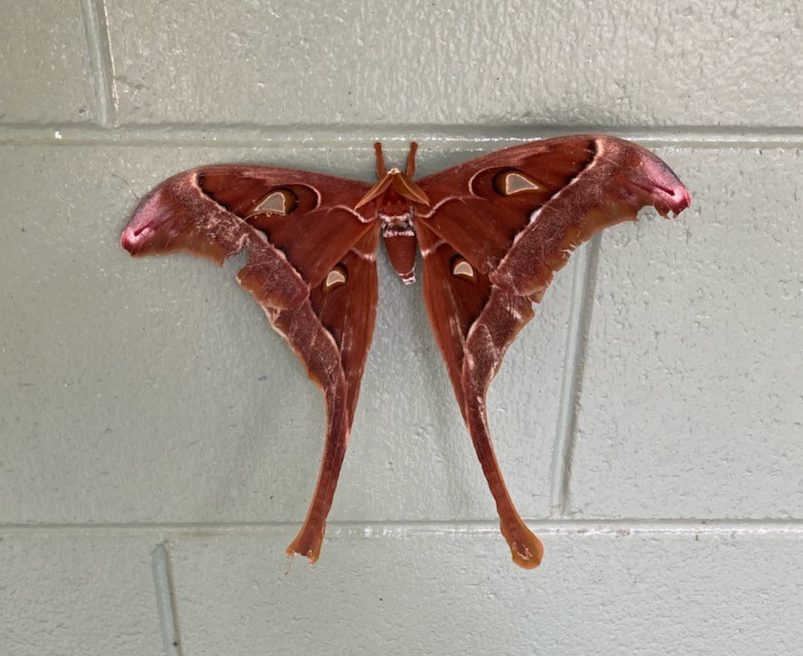We have had two previous posts in 2020 and 2021 celebrating observations of the world’s biggest moth (Coscinocera hercules) here in Paluma. This wet season there have been two further reports from Michele Lando and Barry Smith. Comments from previous posts suggest that this striking moth used to be quite common in Paluma some twenty years ago but are now a rare sight.


Perhaps the local population is on the rise? It is plausible that the proliferation of preferred food plant (Bleeding Heart trees – Homalanthus novo-guineensis) around Paluma since cyclone Yasi (2011) has provided an increase in the food source for the caterpillars. There are some empirical data to support this notion. A quick look at records from the Atlas of Living Australia shows the number of records of the Hercules Moth in Queensland has increased substantially since about 2011, which is the year that Yasi hit Queensland.

Source: Atlas of Living Australia
This type of observational data needs to be interpreted very carefully, however, since it is also possible that the increase since 2011 is simply due to an increase in the number of people recording observations in the popular iNaturalist app.
If you see any more of these wonderful creatures around Paluma, please let Michele Bird or Jamie Oliver know.
Text by Jamie Olver, Photos as indicated

I found one of these Hercules moths at the entrance to Gumburu on the 9th Jan.